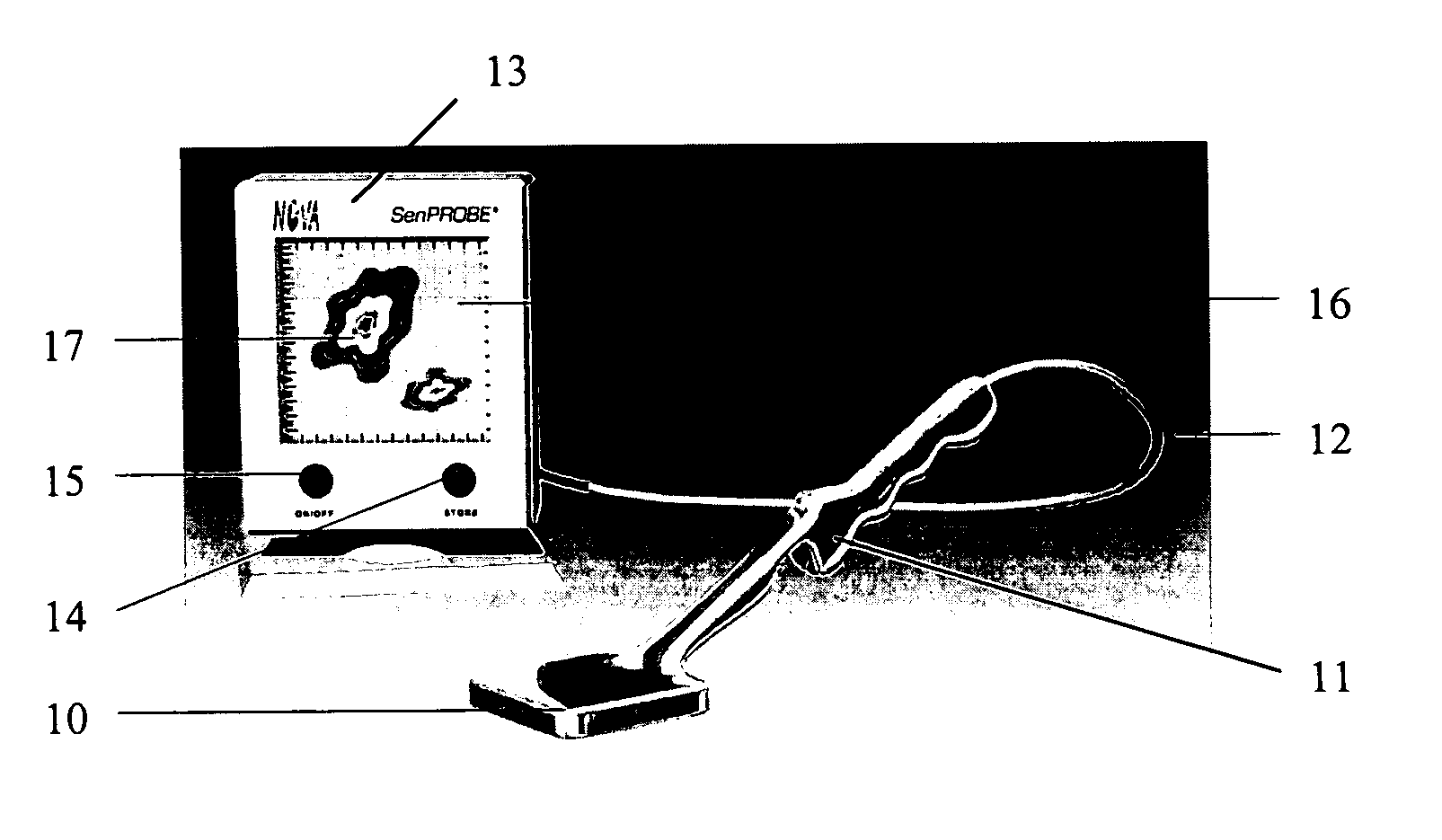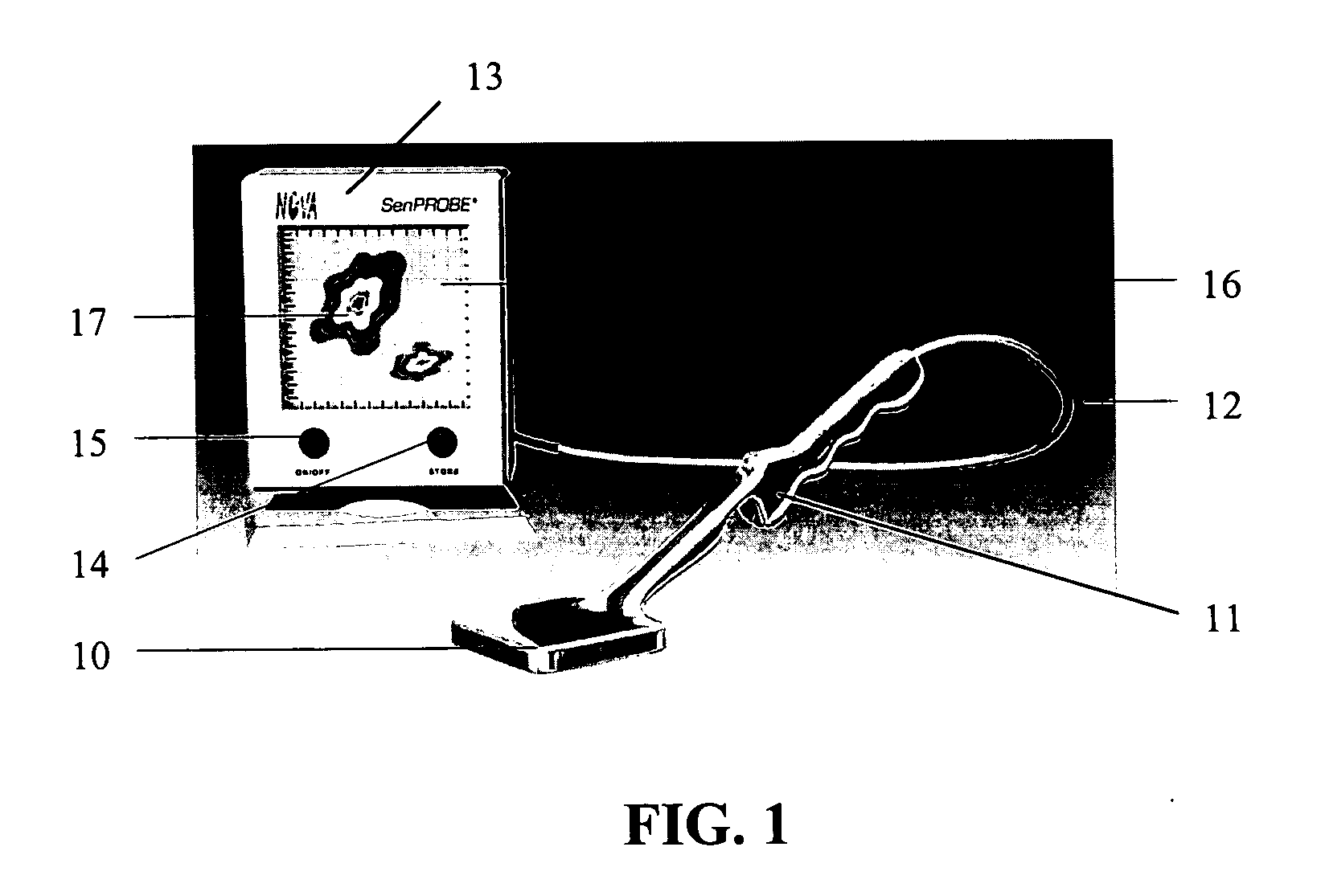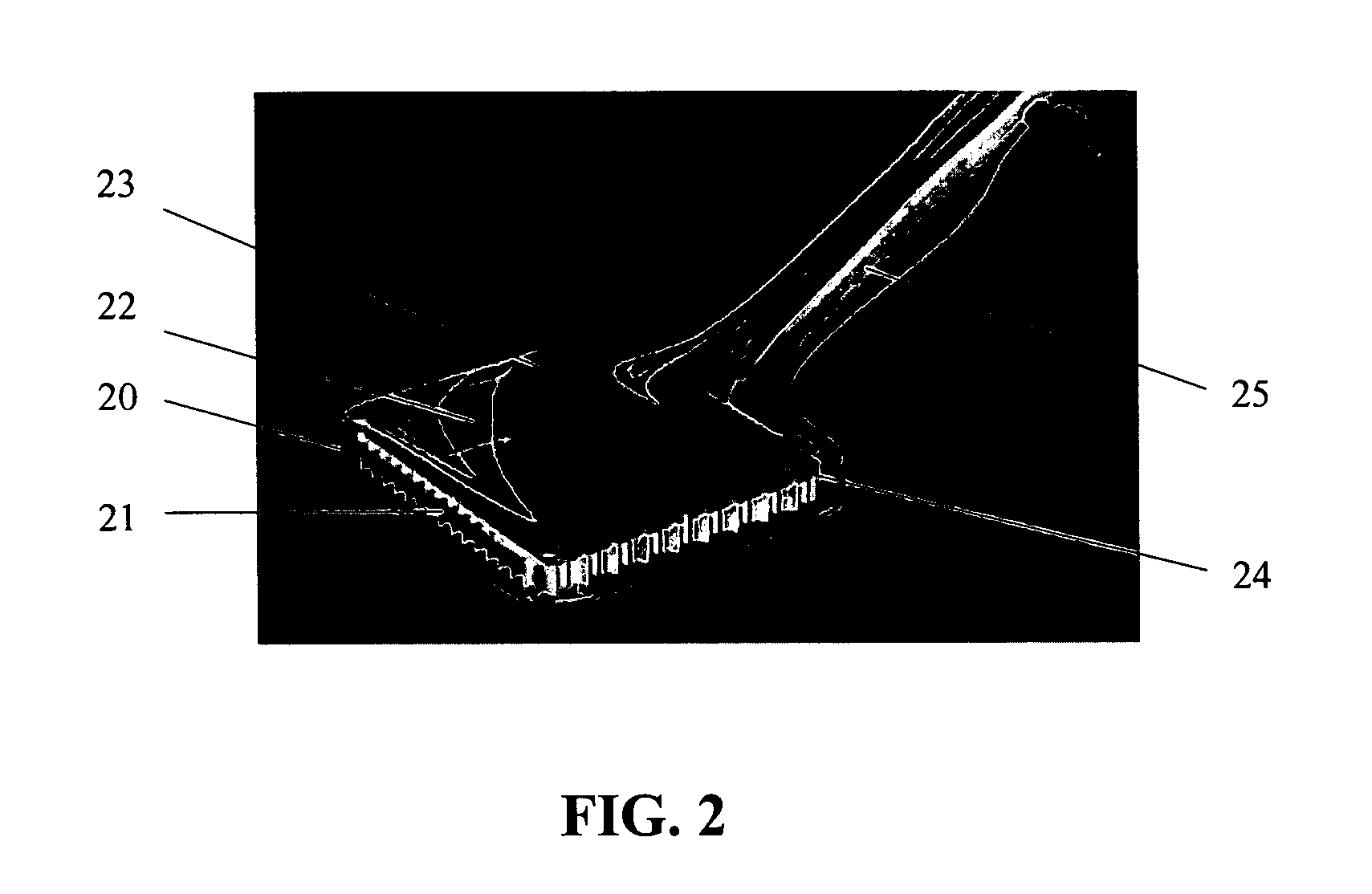Imaging probe
a portable, imaging probe technology, applied in the field of imaging probes, can solve the problems of limited use, inaccurate location of sentinel nodes, and inability to provide accurate information on the extent of tumors, and achieve the effects of high sensitivity, high sensitivity, and high sensitivity of the reported system
- Summary
- Abstract
- Description
- Claims
- Application Information
AI Technical Summary
Benefits of technology
Problems solved by technology
Method used
Image
Examples
Embodiment Construction
[0035] For this application, we plan to use detectors 24, 30, 82 with a thickness of 3 to 5 mm, which is well suited for photons from 99mTc, the radionuclide most commonly used in radiopharmaceuticals. The pixel sizes will be selected from 1 to 3 mm. One side of these detectors have two-dimensional array of pixels (electrodes) normally as anodes and the other side is a single plane electrode, normally used as cathode. Another embodiment would be to make the pixels as cathodes and the backside electrode to function as anode. A bias voltage is applied between the anode and cathode where the electrons generated by an x-ray or a gamma ray are collected at the anode(s). In the main embodiment the two dimensional pixelated side faces the printed circuit board.
[0036] The energy resolution of our current CdZnTe pixel detectors (FIG. 3) 30 with 4×8 pixels and 3 x 3 mm pixel pitch, read out by the RENA chip, has been measured using 57Co, 139Ce, and 241 Am sources. Sample energy spectra are s...
PUM
 Login to View More
Login to View More Abstract
Description
Claims
Application Information
 Login to View More
Login to View More - R&D
- Intellectual Property
- Life Sciences
- Materials
- Tech Scout
- Unparalleled Data Quality
- Higher Quality Content
- 60% Fewer Hallucinations
Browse by: Latest US Patents, China's latest patents, Technical Efficacy Thesaurus, Application Domain, Technology Topic, Popular Technical Reports.
© 2025 PatSnap. All rights reserved.Legal|Privacy policy|Modern Slavery Act Transparency Statement|Sitemap|About US| Contact US: help@patsnap.com



